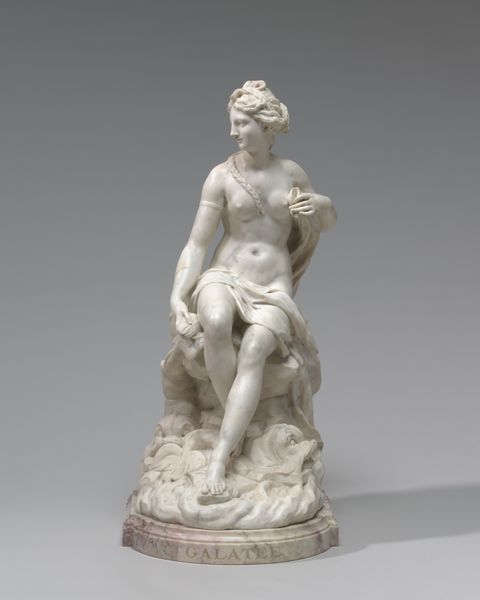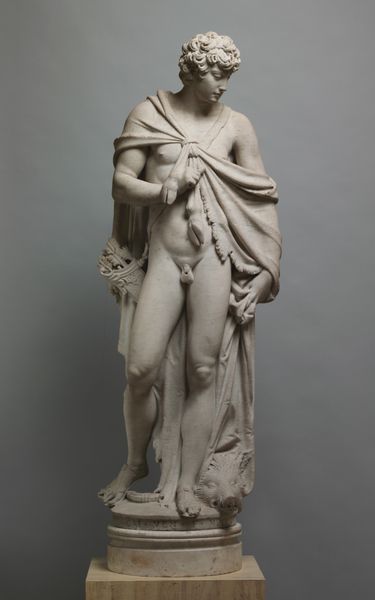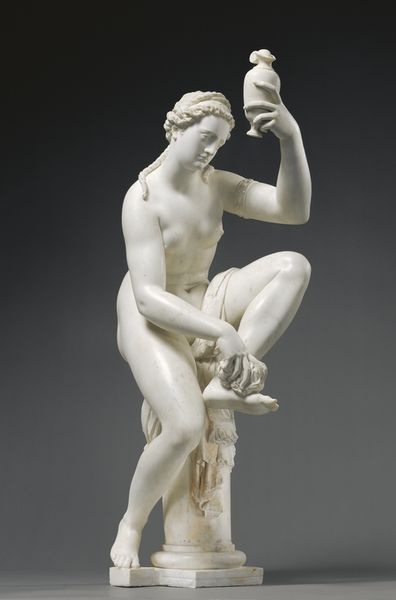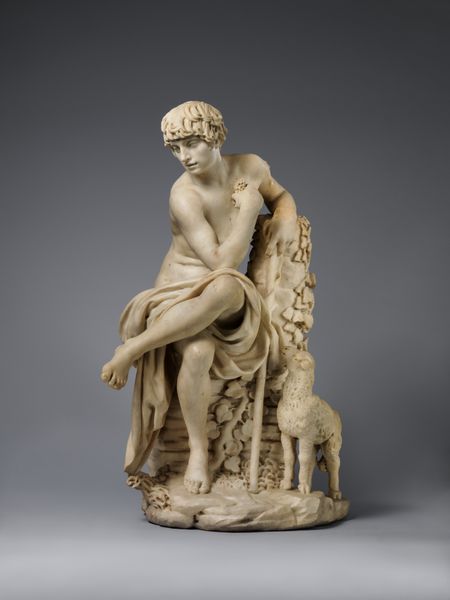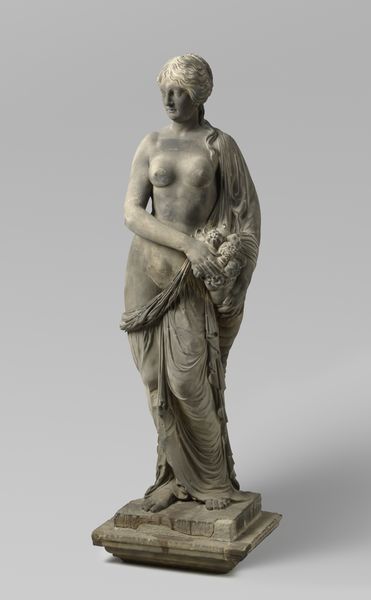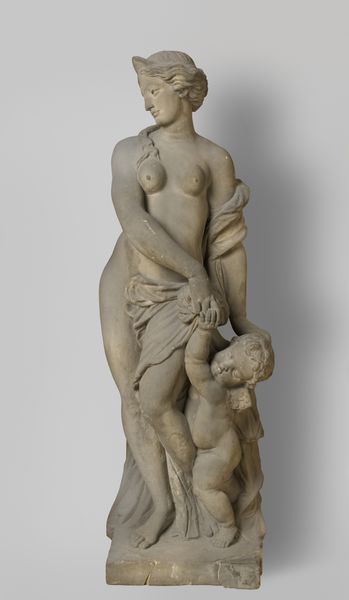
carving, sculpture, marble
#
portrait
#
carving
#
sculpture
#
sculpture
#
marble
#
nude
Dimensions: Figure: 60 x 34 1/2 x 37 1/4 in. (152.4 x 87.6 x 94.6 cm) Base (Granite base): 23 in. Other (Plinth with inscription): 5 3/4 in. (14.6 cm)
Copyright: Public Domain
Editor: Here we have Augustus Saint-Gaudens' marble sculpture, *Hiawatha*, created between 1871 and 1874. The figure’s pensive pose really strikes me. What kind of context can you provide that shapes the work? Curator: Well, we must consider how the Romantics of the 19th century constructed ideas about the so-called "noble savage." Sculptures like this served as both artistic statements and cultural commentary, perpetuating certain myths about Indigenous people. Editor: So it’s not just about the aesthetic qualities, but also about how it was viewed back then? Curator: Precisely. How was the figure meant to be seen, by whom, and what values were being subtly reinforced or imposed through it? Saint-Gaudens draws from Longfellow's poem, embedding literary tropes into a marble figure. What social function might such a sculpture play within institutions like the Met? Editor: That's fascinating. So the museum isn’t a neutral space, but also part of this historical context, shaping how we understand "Hiawatha" now. I’m starting to see the artwork’s implications and public role. Curator: Indeed. Think of who funds the acquisition of such pieces, whose stories are deemed worthy of immortalization in marble, and how those choices reverberate through generations of viewers. Does this shift how you initially perceive the statue? Editor: Absolutely, knowing this has complicated what seemed like a straightforward depiction. Thank you! Curator: And thank you for prompting such a valuable line of inquiry.
Comments
No comments
Be the first to comment and join the conversation on the ultimate creative platform.
